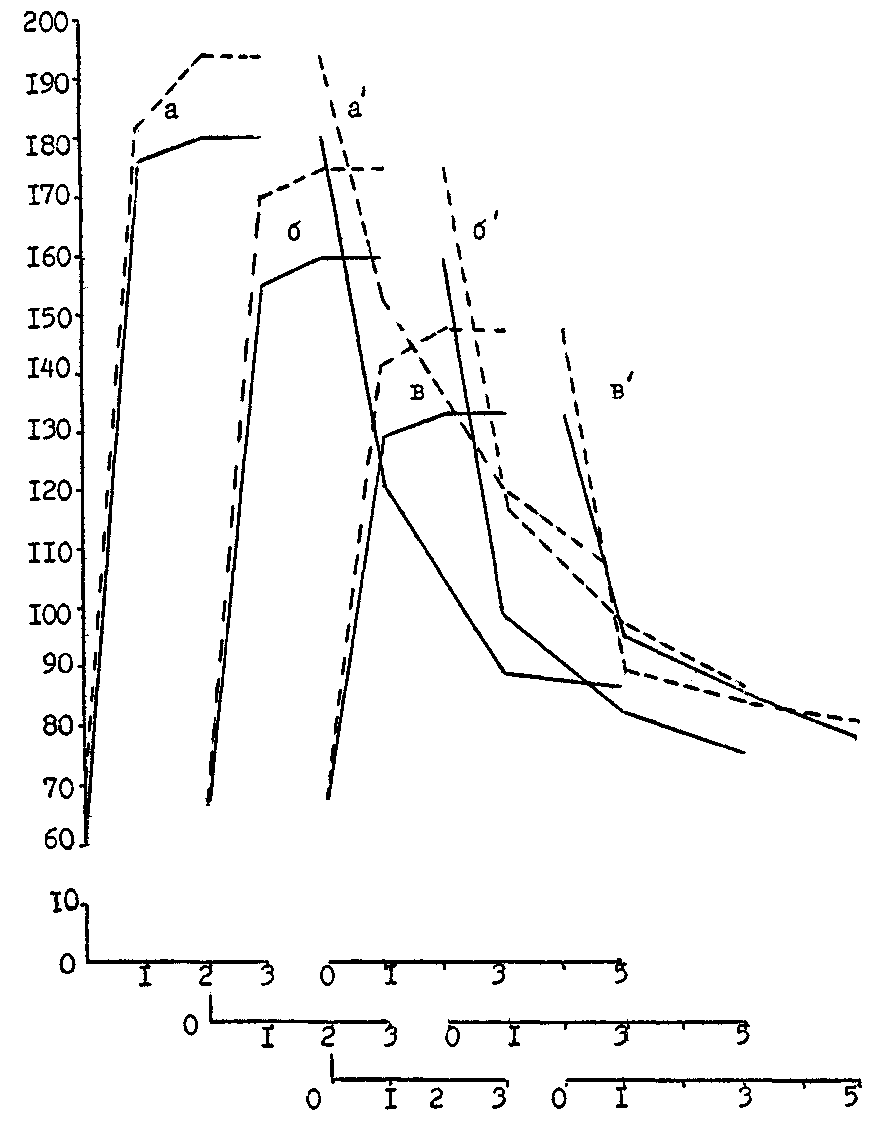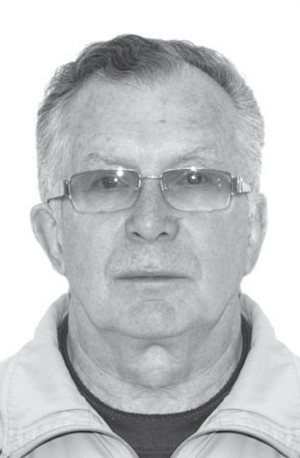HEART RATE DYNAMICS INFLUENCED BY TRAINING
Фотографии:
ˑ:
N.G. Golovko, associate professor, Ph.D.
O.A. Pluzhnikov
V.D. Bogachev
Belgorod state agricultural academy named after V.Ya. Gorin, Maisky district, Belgorod
Key words: muscle load, dynamics of recovery of heart rate, cardiac rate, running speed.
Introduction. The level of heart adaptation to endurance muscular work can be estimated by the value of heart rate (HR) at physical loading and during recovery from it [1, 2]. Better trained athletes usually have lower HR at standard loading.
Less trained runners recover to the level of pre-exercise condition much slower than the ones adapted to the applied load [3].
Maximum physical working capacity is maintained at the high level thanks to the increase in breathing and heart rates.
The heart rate dynamics is directly dependent on the dynamics of intensity of endurance muscular work: heart rate rises with increasing power.
It is assumed that the HR value after exercise of varying intensity is somewhat differs from its indices during exercise and the degree of variance depends on the significance of the pre-exercise value of heart rate. It is believed that heart rate from 150 to 180 bpm provides the most effective adaptation of organs and systems in the ones involved in sports to motor activity for development of endurance. Long-term loadings provoke reduction of HR, affecting the efficiency of peripheral circulation.
Relevance. However the problem of change of HR at increasing intensity of running in view of various methods of variation of running loads is still insufficiently studied. From this point of view it is advisable to study the dynamics of recovery of heart work to determine optimal rest pauses between reps at running loading at long distances with varied speed. The present study is devoted to allocation of the optimal running speed and duration of rest pauses after loading.
The purpose of the study was to consider the dynamics of development and recovery of pulse responses during and after exercise depending on various running loadings.
Materials and methods. The research methods consisted of observation of the dynamics of intensity of running loading and HR, determined by registering electrical forces of the heart on a single channel ECG recorder of 0-63 type.
Electrocardiograms were registered at rest, during muscular work at the 1st, 2nd and 3rd min and after finishing it at the 1st, 2nd and 5th min in a sitting position.
Pre-jelled cup electrodes, fixed on the breast skin after pre-treatment, were used to divert biopotentials. The diameter of cup electrodes was 8.10 mm.
Electrodes were placed on the chest, one in the attachment of the third rib to the right edge of the sternum, another - in the fifth intercostal space along the left midclavicular line (H abduction by L.A. Butchenko, 1963).
The average duration of ten cardiac cycles was determined on electrocardiograms and laid the basis for runners’ HR calculations. The paper speed when recording ECG was 50 mm/s. The recorded and processed electrocardiograms totaled to 168.
Results and discussion. Proceeding from the findings, HR at the 3-minute express treadmill running was significantly lower in the subjects of the Group B compared with the group C (Tab. 1).
Lower heart rate values at the speed 3; 4,5 and 5,5 m/s in runners of the group B indicate to the higher reserve of the myocardial working capacity to endurance loading, rather than in athletes of the group C.
Table 1. HR dynamics at the 1st, 2nd and 3rd minutes of treadmill running, М ± т
|
Running speed, m/s |
Group, n=4 |
1st min |
2nd min |
3rd min |
Statistical difference |
|
3 |
B C |
129 ± 3,9 141,5±4,85 |
133 ±5,58 147,5±5,8 |
133 ± 5,58 147,5± 5,8 |
2,01 → 1,8 → 1,8 |
|
4, 5 |
B C |
155 ± 1,05 170 ± 5,3 |
159,5±1,95 175 ±3,1 |
159,5±2,9 175 ±3,1 |
2,58 → 3,6 → 3,6 |
|
5, 5 |
B C |
176,6±5,72 181,1±3,78 |
179,6±3,14 194 ± 4,8 |
179,6±3,14 194 ± 4,8 |
0,73 → 2,63 → 2,63 |
The most significant difference in the heart rate indices was observed in the groups when running at the speed 4,5 m/s and the least – at the speed 3 and 5,5 m/s. The reason is that when running with moderate intensity the irritant force was insufficiently high, preventing from accurate differentiation of the level of cardiovascular adaptation in runners with different fitness levels, but is too high at the speed 5,5 m/s, provoking a substantial increase of HR in boys and senior athletes regardless their fitness. The variance in the group indicators has reached statistical differences only when running at the speed 4,5 m/s at the 2nd and 3rd minutes of work. The HR increase was distinguished by achievement of the maximum values of HR by the end of the 2nd min of muscular work (Fig. 1). At the 3rd min of running HR was practically the same, which must be due to the finishing the warming-up of the body by the end of the 2nd minute and the uniform speed of movement of the tape transport.
Thanks to the relative stabilization of the heart rate value at the 2nd minute of work, running at various speed can be used to determine optimal time and speed levels at endurance running loadings. In addition, it contributes to sufficiently accurate control of physical loading and focusing on the HR dynamics while studying the effect from running with different intensity on the body of young and senior runners. The dynamics of heart rate recovery after exercise must be caused by the value of oxygen consumption and the speed of oxygen debt liquidation in the rest period of an athlete for these indices are closely correlated within specific limits.
As shown on the Fig. and Table 1, the maximum speed of the phases of HR recovery was marked in all subjects at the 1st minute of rest after exercise and decreased remarkably during the next minutes of rest. The slowest rate of heart rate recovery was at the 3rd minute of rest.

Fig. HR changes among boys during treadmill running and in the period of recovery after exercise. Solid lines – group B, dash – group В.
A, b, c – HR at running speed 5.5; 4,5 and 3,0 m/s; a', b', c' – the curves of HR recovery after running respectively. Y-axis – HR, bpm. X-axis:1, 2, 3 – time of treadmill running (min); 1, 3, 5 – time for recovery after exercise (min)
On the other hand, the value of the increase of HR in the subjects at the 1st minute of rest is intensified by physical loading.
Table 2 shows the dynamics of HR recovery after treadmill running in the groups.
Table 2. HR dynamics at the 1st, 3rd and 5th min of recovery after 3-minute treadmill running, М +m
|
Running speed, m/s |
Group, |
1st min |
2nd min |
3rd min |
Statistical difference |
||
|
а |
б |
в |
|||||
|
3 |
B C |
94±4,85 |
85±5,0 |
78,5±4,6 |
0,45 |
0,05 |
0,12 |
|
90±7,5 |
85±6,3 |
79,7±8 |
|||||
|
4, 5 |
B C |
99±10,7 |
83±4,85 |
77,75±4,35 |
1,64 |
1,47 |
1,1 |
|
117±2,67 |
97±8,25 |
88,75±8,95 |
|||||
|
5, 5 |
B C |
121±8,2 |
89±7,9 |
85,66±3,4 |
2,88 |
2,96 |
2,23 |
|
153±7,46 |
119±6,4 |
108±9,5 |
|||||
Proceeding from the studies, effectiveness of heart work recovery after running at various speed depends on the character of loading. Statistically significant differences in the group indices were revealed at the 1st and 3rd minutes of recovery after running at 5,5 m/s, proving that the processes of athletes' body adaptation for endurance muscular work by the principle of multi-directional variation of running distances occurred at the higher level compared to the subjects who had used another mode of variation of length and speed of overcoming of distances.
Conclusions
1. In case of repeated running the rest intervals are to be less than 1-2 minutes at long distances with moderate and high intensity, and 4-5 minutes at close to maximum intensity.
2. Junior and senior runners should use high-intensity running more often, which provokes more effective responses in regard to heart work.
3. Running with HR exceeding 175 bpm and more is to be included to the training of young and senior runners rarely at the second phase of preliminary period until the cardiovascular adaptation adapts to special physical load.
4. The HR recovery responses in athletes after running at distances are phase, progress according to the same principle and can be used when estimating special fitness of sprinters and middle- and long-distance runners.
Bibliography
E-mail: info@bsaa.edu.ru


